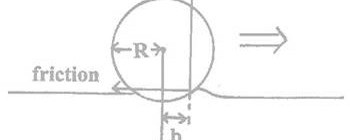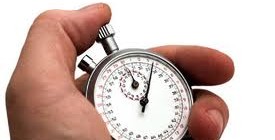When working with players I often see a make or miss, pass or fail attitude with putting, but this is the wrong way to evaluate putting success. When you see too many putts miss with this attitude it can generate scar tissue that is difficult to get past and it can affect everything from your confidence, to stroke mechanics, to your long game. A healthier alternative is what I like to call Putting Blackjack.
For those of you who don’t play Blackjack, there are a set of fixed rules that you follow in order to maximize your odds of beating the dealer, who always has the statistical advantage. There is no room for feel or gut instinct or intuition, you automatically hit and stand when the rules tell you to. For example, you always split ace’s and eight’s, and you hit anything less than 17 if the dealer is showing 7 or more. This last one can be a struggle to execute because your odds of winning this hand or low, but they are even lower if you don’t hit. In other words, you’re simply trying to maximize your odds in a bad situation even when you are expected to lose the hand (like hitting an approach shot 40 feet from the hole).
So how does this relate to putting? You goal in putting is simply to make a higher percentage from every distance than your competitors do and you should stick to your same process on every putt. The best players in the world are going to miss 1 in 10 putts from 4 feet, and they are going to three-putt more often than they one-putt from longer than 32 feet. So your job on lag putts is to two-putt and you should never be upset by not making them. In fact if you hit your approach to 35 feet for all 18 holes and two-putted them all, you would be positive putts-gained at the end of the round. The problem is not your putting (even though your “made nothing”), the problem is your approach proximity.
From 15-20 feet the PGA Tour make percentage average is almost 20%. That means the best players in the world only make 1 in 5 putts in that range. For example, if you hit 18 greens all between 15 and 20 feet from the hole, you would only be expected to make 4 birdies and shoot 68. Most players would say it was the best ball striking of their life and the worst putting, but it’s really world-class putting even though they missed 14 putts from less than 20 feet.
So how do these players shoot scores so much lower than 68 consistently? The two main keys are making birdies on par-5’s where your first putt should be considerably closer–ideally inside 10 feet–and by great scrambling and making a lot of par saves, again inside 10 feet. If you birdie half of the par 5’s, then you only have to find three more birdies on the other 14 holes and scramble well, and you’ll shoot 67.
So when you’re analyzing your putting you have to think in terms of did you meet your expected make percentages or not, and separate your putting from your ball striking and scrambling. This is essentially the concept of putts-gained. Did you make four out of ten 10 footers? Well then you’re matching PGA Tour average. Did you two-putt from longer than 32 feet? If yes then you have more than done your job and should consider the putt a success. At the end of the day if you beat the percentages, especially inside 10 feet, then the only thing holding you back is your ball striking, not your putting. Don’t look at putts in isolation, but rather as an average performance over a round or a tournament, similar to how you would consider a game of Blackjack only after you leave the table, not hand by hand.


























